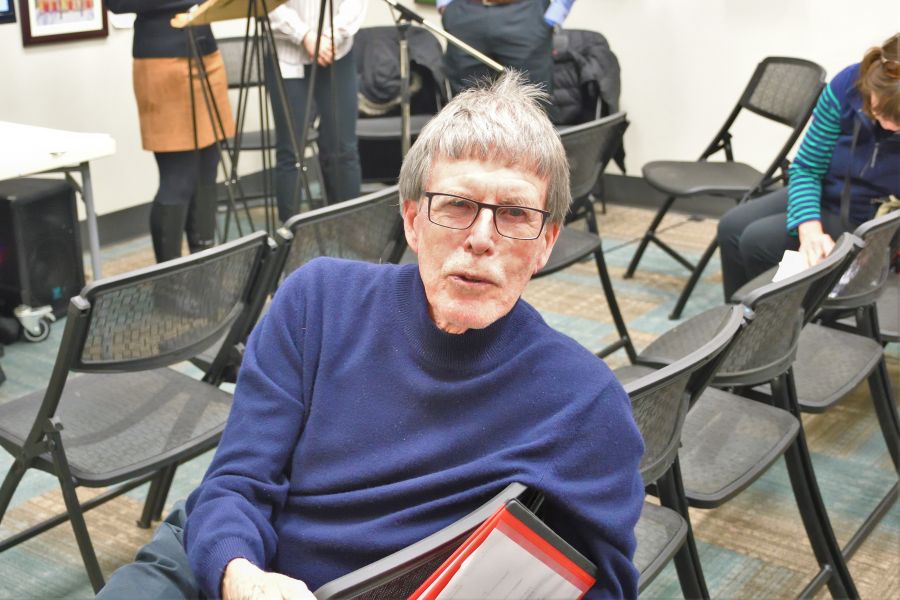My father came from a family of English midland dyers of wool and he was the first to go to university, in his case, Cornell University in New York state where he became a chemical engineer.
He was a quiet, broadly read and educated man, with whom I spent many a summer’s evening or day fishing for small-mouth bass on the upper Thames or Maitland rivers – with varying success.
Dad worked for a small chemical company in London, Ont., close enough to walk home for lunch – and to one night watch a frightening fire nearly destroy the chemical factory where he worked.
But throughout my childhood he rarely talked about his work – nor did I ask, as I remember.
He was a naturalist of sorts who used his microscope at home to analyze microbes and insects inhabiting the plants and soil in his well-kept vegetable garden.
But aside from pointing out the odd microbe fixed on one of his slides he showed little interest in revealing those unseen worlds to me, nor was I all that interested.
It was only when Professor Baldwin in physical chemistry at Western University chastised me and threated to tell my father about my lackadaisical attitude toward chemistry that I found out my father was a member and later head of the department’s monthly speaker’s program and much admired by the staff.
Fortunately for me, I mended my ways, completed medical school and went on to train in clinical neurology in Toronto.
In my final year of clinical neurology training, I made it my business to learn as much as I could about the physiology of the nervous system from the best sources of the day.
This included texts by Mountcastle, and Ruch and Patton and key original papers by Phillips, Eccles and Henneman on the motor system, Hodgkin, and Huxley for the biophysics of the transmembrane potential and action potential, and Katz’s very fine series of papers on neuromuscular transmission.
Of the nine scientists who wrote those papers, four won a Nobel Prize – so I was lucky. When in 1969, I went to Oxford, there were ample opportunities to meet all of them, one of whom, John Eccles, became a source of wise advice in my early scientific career.
Like the Camelot period in physics between 1900 and 1940, there was a similar period of high productivity in basic neurophysiology between the 1930 and 1980, for which collective work, 14 Nobel Prizes were awarded to leaders in the field.
Still, it wasn’t until I wrote my first book in 1983 (“The Physiological and Technical Basis for Electromyography”) that I was forced to master the basics of electrical signalling in the human central and peripheral nervous systems, which formed the body of most of my research for the next 20 years.
By that time both my parents were dead and there were no more opportunities to share what was happening in neuroscience or what my father’s own research had been about.
My education in modern-day chemistry began with the first of now six annual series here in NOTL on Nobel Prizes in the sciences – medicine or physiology, physics and chemistry, and they were eyeopeners for someone like me whose career in science had been narrowly focused (as it is for most scientists who don’t teach basic courses in science to undergraduates).
Steven Weinberg, a theoretical quantum physicist who won a Nobel for his work in developing the Standard Model for quantum mechanics, once said the best way to learn science writ broad, was to teach it. He was right.
That’s what the Nobel series in the sciences did for me, only my students were, and continue to be, the wider public in NOTL.
If my father were alive, I think he would have been very excited by the Noble Prizes that had to do with chemistry and physics, especially the winning work by Francis Arnold on harnessing evolution to develop better enzymes in 2018, Emmanuelle Charpentier and Jennifer Doudna’s prize for gene editing in 2020 and this year’s Nobel won by Carolyn Bertozzi, Morten Meldal and Barry Sharpless for clicking small molecules together to make big ones.
I miss not being able to share those studies with my father because he prized innovation and building better molecules for, in his case, industrial applications.
I am sure he would have applauded our Nobel series and the earlier InfoHealth Series, as ways of sharing the best of science and medicine with the public.
Professor Baldwin, the one who chastised me, later told me my father was a good teacher and so he must have been.
Dr. William Brown is a professor of neurology at McMaster University and co-founder of the InfoHealth series at the Niagara-on-the-Lake Public Library.









